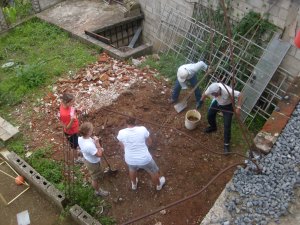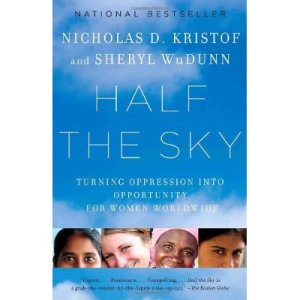This week’s #VolunteerVoices comes from Tyrel Nelson a Leader-in-Training for Global Citizens Network.
Receipts, Receptions, and Perceptions
The young woman behind the counter returns my list. “¿Algo más?” she asks.
I shake my head.
She pulls out a calculator and contemplates the pile of groceries in front of her. While she punches away, the post-trip expense report strikes the forefront of my mind. The girl eventually reveals the total, and I respond with the dreaded question: “¿Me puede dar un recibo?” Can you give me a receipt?
Her wide eyes are nothing new. I’ve already made several supply runs for our Global Citizens Network team —visiting tiny tiendas in Xecam (Shay-com) and neighboring La Estancia—and every store clerk has had the same confused look. I’ve picked up that no one in the highlands has this expectation, let alone a cash register to do the job for them. So the slips are handwritten, probably another reason why the Guatemalans haven’t offered me a receipt prior to my asking.
Without hesitation, however, the lady slaps a spiral notebook on the glass and opens it to a clean sheet. She begins a detailed bill, pricing out every single product. I tell her she can just write “abarrotes” (groceries), the total due, the date, and her signature. She ignores me. She’s a half page in when I try to end it once again. She smiles. Her autograph reaches the bottom edge a couple minutes later. But before she tears the paper from the notebook, she returns to her calculator, carefully reentering the numbers to ensure the sum hasn’t changed. I finally unfold a wad of quetzals and hand it to her. She hands me my change along with her masterpiece.
“Este es el mejor recibo que he recibido,” I answer, smirking because the phrase sounds funny while I utter it. This is the best receipt that I have received.
I’m not sure if she finds my statement as humorous as I do, but she sports an ear-to-ear grin nonetheless.
As a Leader-in-Training, I had to keep my head on a swivel for twelve days. Therefore, it didn’t take me long to realize that everybody knew each other in Xecam. I actually discovered the next day that the lady in the store was Apolonia, daughter of Nicolasa, whose house in which four of us stayed during our time in the village. And Nicolasa, along with her mother and sisters, graciously prepared the meals for our entire group. But it wasn’t just these women who treated us so kindly. I took in how everyone we met in the community took us in.
Whether it was through exchanging pleasantries with passersby or swapping smiles with a local, our hosts made us—ten foreigners from different parts of the U.S. and Canada—feel welcome. I was reminded that a “community” can extend beyond borders from this experience, an experience I already find myself missing.
Tyrel Nelson
Xecam, Cantel, Quetzaltenango, Guatemala
July 17-28, 2015










![IMG_3355 [1600x1200]](http://volunteerinternational.files.wordpress.com/2011/03/img_3355-1600x1200.jpg?w=300)
![IMG_3879 [1600x1200]](http://volunteerinternational.files.wordpress.com/2011/03/img_3879-1600x1200.jpg?w=300)
![IMG_3868 [1600x1200]](http://volunteerinternational.files.wordpress.com/2011/03/img_3868-1600x1200.jpg?w=300)
![IMG_3875 [1600x1200]](http://volunteerinternational.files.wordpress.com/2011/03/img_3875-1600x1200.jpg?w=300)
![IMG_3864 [1600x1200]](http://volunteerinternational.files.wordpress.com/2011/03/img_3864-1600x1200.jpg?w=300)
Recent Comments